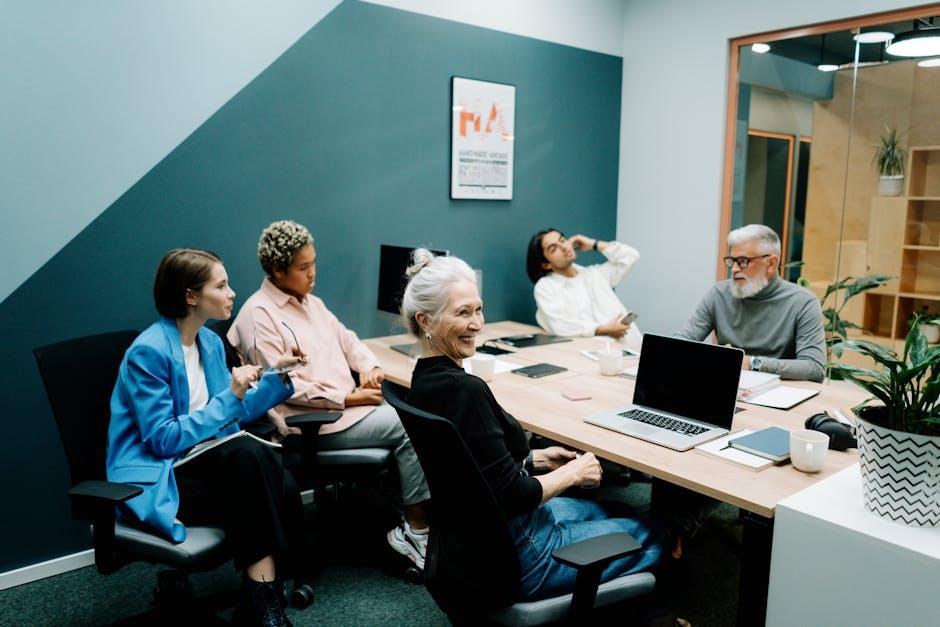In the realm of filmmaking, the synergy between directors and cinematographers often serves as the cornerstone of cinematic excellence. This partnership, forged in the crucible of creativity and technical prowess, can elevate a film from mere visual storytelling to an unforgettable artistic experience. have not only shaped the aesthetics of individual films but have also redefined genres and influenced generations of filmmakers. By examining these dynamic duos, we gain insight into how their unique visions coalesce to create masterpieces that resonate with audiences worldwide. This article delves into some of the most legendary collaborations, analyzing how their combined genius has left an indelible mark on the history of cinema.
Exploring the Visual Language: How Director-Cinematographer Duos Shape Film Aesthetics
In the world of cinema, the collaboration between directors and cinematographers is crucial in crafting a film’s unique visual language. This dynamic duo works in tandem to transform scripts into visual spectacles, shaping the aesthetics that captivate audiences. The director sets the vision, while the cinematographer translates that vision into moving images, ensuring that every frame aligns with the narrative’s emotional and thematic undertones.
- Stanley Kubrick and John Alcott: Known for their meticulous attention to detail, this partnership brought us the hauntingly beautiful visuals of “Barry Lyndon.” Alcott’s use of natural lighting techniques under Kubrick’s direction created a painterly quality that remains iconic.
- Christopher Nolan and Wally Pfister: Together, they crafted the visually stunning worlds of “Inception” and “The Dark Knight.” Pfister’s expertise in blending practical effects with innovative camera work complemented Nolan’s complex storytelling, resulting in a seamless cinematic experience.
- Wes Anderson and Robert Yeoman: This duo is celebrated for their distinct, whimsical style characterized by symmetrical compositions and vibrant color palettes. Their collaboration on films like “The Grand Budapest Hotel” highlights a meticulous, almost storybook aesthetic.
Each of these partnerships illustrates how the synergy between a director and cinematographer can elevate a film’s visual narrative, leaving an indelible mark on cinematic history.

Analyzing the Symbiosis: Techniques That Elevate Iconic Collaborations
The magic of iconic collaborations between directors and cinematographers often lies in the seamless fusion of vision and technique. These partnerships thrive on mutual understanding and shared creative goals, allowing each artist to push boundaries while staying true to the film’s essence. Lighting and composition are critical elements that elevate these collaborations, crafting visual narratives that resonate with audiences. Directors like Wes Anderson, known for his meticulous symmetry, rely on cinematographers who can translate his vision into vibrant, painterly frames.
Several techniques underpin these successful collaborations, including:
- Visual Storyboarding: This technique ensures a unified vision from the start, allowing directors and cinematographers to align on the film’s aesthetic and emotional beats.
- Color Palette Synchronization: A cohesive color scheme can evoke specific emotions and enhance storytelling, requiring both parties to collaborate closely on color grading and lighting.
- Innovative Camera Work: Pioneering camera movements and angles can redefine a scene’s impact, often requiring a daring synergy between the director’s ambition and the cinematographer’s technical prowess.
These techniques are not just tools but languages through which directors and cinematographers communicate, ensuring their collaborative efforts result in unforgettable cinematic experiences.
Mastering the Craft: Lessons from Legendary Director-Cinematographer Partnerships
The synergy between directors and cinematographers often serves as the heartbeat of cinematic masterpieces. These collaborations transcend mere technical alliances, evolving into dynamic partnerships where vision and execution meld seamlessly. Alfred Hitchcock and Robert Burks exemplify this with their groundbreaking work in films like Vertigo and Rear Window. Their shared understanding of suspense and visual storytelling redefined the psychological thriller genre, employing innovative camera techniques that continue to influence filmmakers today.
Another iconic duo, Christopher Nolan and Wally Pfister, have consistently pushed the boundaries of visual storytelling. Their collaboration on films such as Inception and The Dark Knight trilogy highlights a shared commitment to practical effects and large-format film. This partnership is marked by a distinctive style characterized by sweeping landscapes and immersive action sequences, all while maintaining a profound emotional depth. These partnerships remind us that when visionary directors and skilled cinematographers unite, the result is often a timeless cinematic experience.
- Innovative Techniques: Experimentation with camera angles and lighting.
- Emotional Depth: Creating visual narratives that resonate.
- Genre Redefinition: Setting new standards in storytelling.

Recommendations for Aspiring Filmmakers: Emulating the Greats in Visual Storytelling
To craft unforgettable visuals, aspiring filmmakers can study the profound partnerships between legendary directors and cinematographers. These collaborations have defined cinematic language and visual storytelling, offering a wealth of inspiration and technique.
- Stanley Kubrick & John Alcott: Known for their meticulous attention to detail, this duo created masterpieces like Barry Lyndon, utilizing natural light to evoke authenticity and atmosphere.
- Alfred Hitchcock & Robert Burks: Their work on films such as Vertigo showcased the power of color and composition in building suspense and emotional depth.
- Christopher Nolan & Wally Pfister: By blending practical effects with innovative camera work in films like Inception, they pushed the boundaries of visual storytelling.
Emulating these greats involves understanding their unique visual signatures and the seamless integration of narrative and imagery. Focus on these elements:
- Lighting: Study how lighting sets mood and directs attention.
- Framing: Analyze the use of composition to convey meaning and emotion.
- Movement: Observe how camera movement enhances storytelling and viewer engagement.

